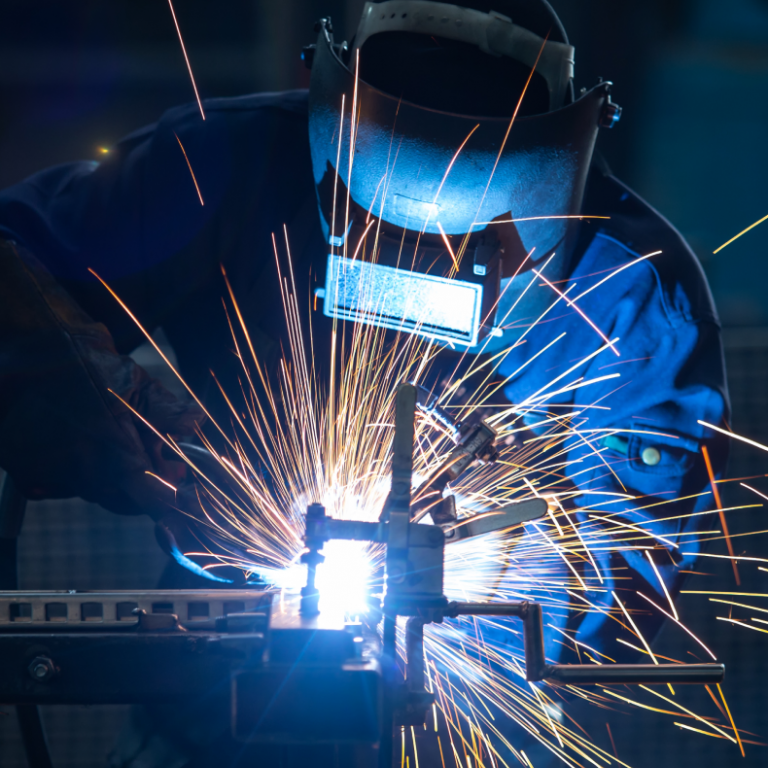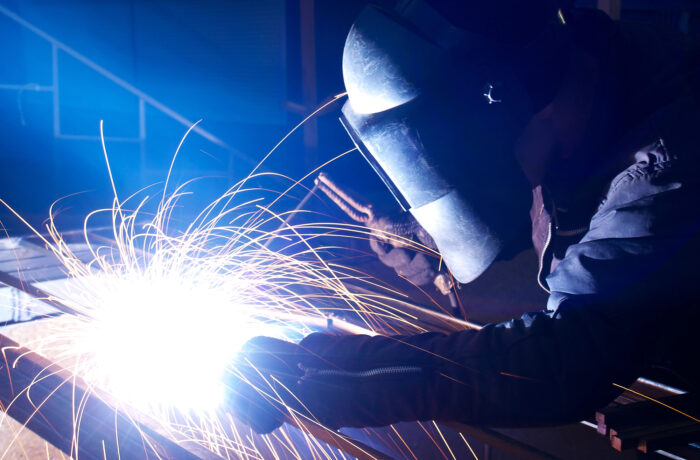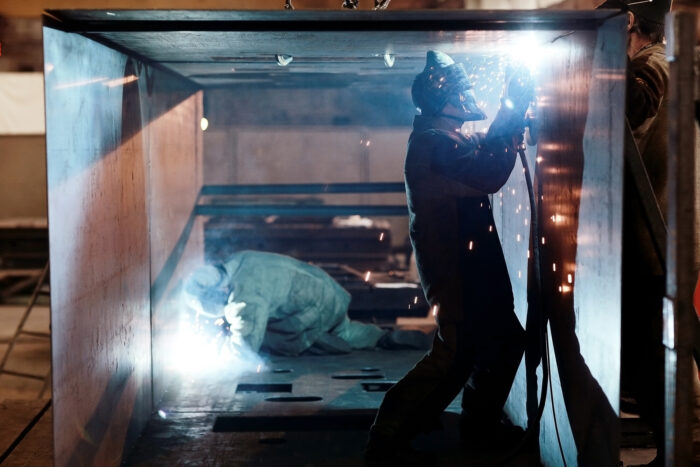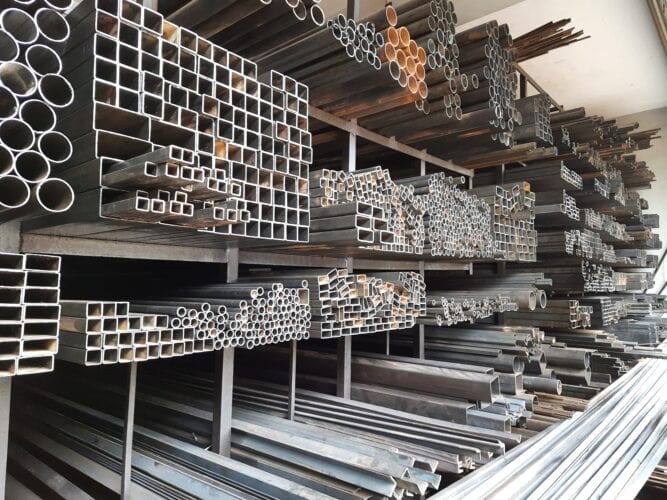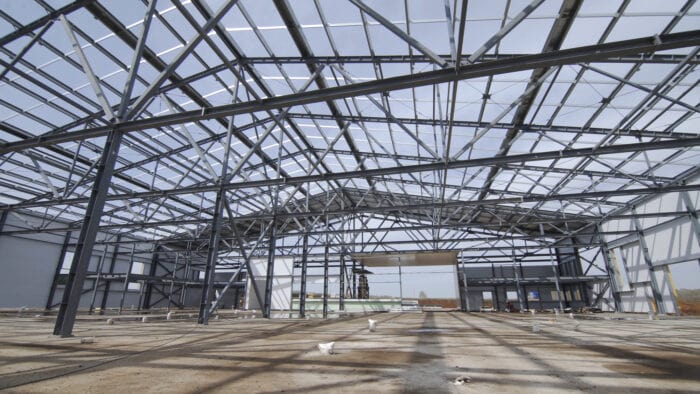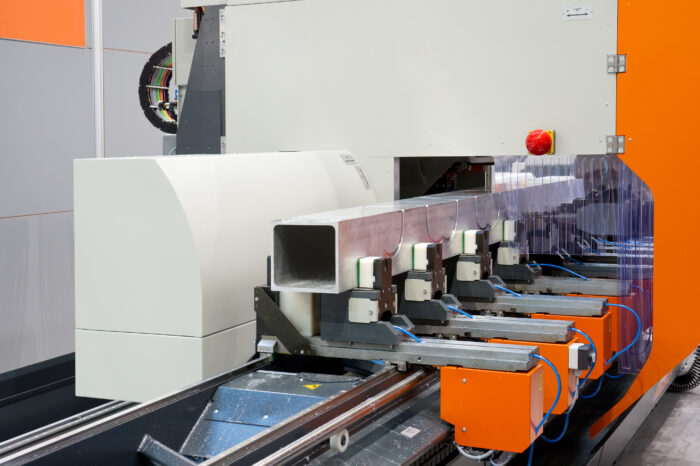Have you ever wondered what goes into constructing the huge skyscrapers dotting Australian skylines? What kind of design and materials are involved in ensuring their structural stability, now and for years to come? From initial design and engineering to construction, these large buildings and structures owe their existence to structural steel and the fabrication processes that go into it, all of which ensure the integrity and safety of the final product. In this guide, we’ll learn more about the structural steel fabrication process and how it works.
What is structural steel fabrication?
Structural steel fabrication is a process that transforms raw steel into components and structures used in the construction of buildings (particularly commercial buildings), bridges, ships and more. The main goal is to create steel components that are strong, durable and highly accurate the meet the design specs of the project.
As a material, steel is known for its high strength-to-weight ratio, which is why it is used to add strength and stability to buildings and structures without significantly adding to their weight.
Not accurately implementing fabrication processes can compromise the viability of structural steel, which is why it is always essential to consider working with an experienced fabrication professional.
Role of structural steel in modern construction projects

Even though there’s been a decline of 2.5% per year on average, the structural steel fabrication market size was still $2.2 billion in 2022 – indicative of the demand for the industry. Structural steel fabrication delivers sturdy, versatile and reliable structures – vital for modern construction projects.
Buildings (particularly commercial buildings)

Modern construction has seen the exponential rise of high-rise commercial buildings, industrial facilities and warehouses, garages, multi-level parking buildings, shopping centres and residential buildings – creating frames, beams, columns and more.
Bridges

When you think of bridges, Sydney’s iconic Harbour Bridge springs to mind. The total weight of the steel used in the construction of this bridge weighed 52,800 tonnes – with 39,000 tonnes of structural steel going into the arch. Structural steel can create beams, trusses, girders, and other components to support heavy loads in bridge building.
Other infrastructure and building projects

Due to its excellent strength and impact resistance, structural steel also plays a significant role in other projects such as shipbuilding, steel platforms, stairways, railings, pipelines, transmission towers, aerospace components and engines. It is ideal for building decks, hulls, platforms, cranes, steel plates and heavy machines.
Advantages of structural steel in construction
Structural steel has several advantages in construction, which is why it is increasingly used in the industry.
- Flexible and versatile – it can accommodate complex design and customisation requirements.
- Reduced labour costs – steel construction uses only 10 to 20% of the labour needed for concrete construction, keeping your labour cost low.
- Saves time and increases speed of construction – quality issues are fixed during offsite fabrication, saving time and increasing construction speed.
- Strong and durable – high tensile strength provides the ability to handle heavy loads while also being resistant to fire and termites.
- Sustainable – steel is 100% recyclable and can be reused in different applications. Steel is also energy efficient.
- Lightweight – steel is lighter than concrete. It is also cheaper and easier to use in construction.
What is the structural steel fabrication process?
Structural steel goes through different fabrication processes to provide the framework for building and infrastructure projects to fulfil the specifications. Some of these include:
Design and architecture
The first step is to finalise the design and architecture, both of which must align. This involves analysing the height, shape, layout, spacing, loads, forces, weight and resistance, including dead loads, live loads, wind resistance, water resistance and others. The design and architecture should withstand these forces without compromising the structure’s stability and safety.
Surface preparation
Structural steel fabrication begins with good surface preparation. This includes thorough inspection for any existing defects, removal of existing coatings and rust, cleaning and more to ensure it is ready for the next step of fabrication.
Cutting and shaping steel
The next step is to cut and shape steel into the desired shape using different types of saws, shears, cutters, plasma torches and punches. You may also need custom machining if you require custom components for a project.
Bending and drilling
Bending involves deforming steel to create the desired shape, while drilling creates holes to specific diameters to accommodate the attachment of different components using screws, bolts and other types of fasteners.
Welding and assembly
The material is now ready for welding and assembly. Everything is re-checked once again to make sure it fits together. Welding then joins different components as they are assembled into one or multiple structures.
Finishing
Metal finishes will depend on the nature of the project, but some options include powder coating, galvanising, painting and priming. Factors influencing the finish include weather conditions, budget, aesthetics, and project specs.
Quality control and inspections
Quality control measures in metal fabrication ensure all fabricated components meet project specifications and industry standards. It includes inspections, testing, safety processes and more to guarantee the structural integrity of the final product.
Transportation to site
Once everything meets quality control checks, the components will be prepared for shipping and transportation to the final site. This is done swiftly and effectively, making it easy to finish assembling onsite.
Onsite assembly
The construction crew then assembles the finished product where prefabricated structures and components are joined together in alignment with the project requirements.
Important safety considerations
Prioritising safety is crucial to reduce the risk of injuries and accidents, not just to create a safe work environment but also to ensure structural integrity for those using the final product.
Proper training and qualifications
Only professionals with proper training and qualifications can do the job to ensure that structural steel components are strong and durable.
Sound engineering and design
It’s also essential to hire experienced designers and engineers to ensure structural steel’s long-term stability and load-bearing capacity.
Compliance with regulations
A proper understanding of compliance requirements and regulations is crucial to ensure the safety of workers onsite and future users.
Use of PPE
Different types of PPE may be used at different fabrication stages to protect workers and ensure their safety by minimising risks.
Structural steel fabrication: the path forward
Modern innovations defy the boundaries of what’s possible in structural steel fabrication.
We’ll give you an example of multi-level building constructions. A recent innovation is the floor framing system that places steel beams within the composite slab. This has significantly reduced the depth of the structural floor and allowed for building more floors in compliance with height limitations and other regulations.
The Australian Steel Institute has cited the example of the Meriton residential towers in North Sydney, with minimised structural depth of its floor system and a massive 40% reduction in the need for concrete.
The industry also continues to embrace technological advancements such as computer-aided design to improve accuracy and efficiency, enabling quicker production and better quality control.
Another trend we are seeing is the increased emphasis on sustainability, which means adopting recycled steel and energy-efficient processes to reduce the project’s carbon footprint and protect future generations.
Conclusion

Whether you’re commissioning a construction project or an engineer planning the design, it’s important to consider who can help you with structural steel fabrication in Sydney. You need someone who understands the workings of structural-grade steel, and follows all safety practices, codes and standards for metal fabrication in Australia to balance functionality, safety and aesthetics.
At Prime Fabrication, we’ll work with you to ensure your project sees a successful outcome. Contact us today to find out more about how we can collaborate with you.
Some of our other areas of expertise include aluminium fabrication in Sydney and stainless steel fabrication in Sydney.

